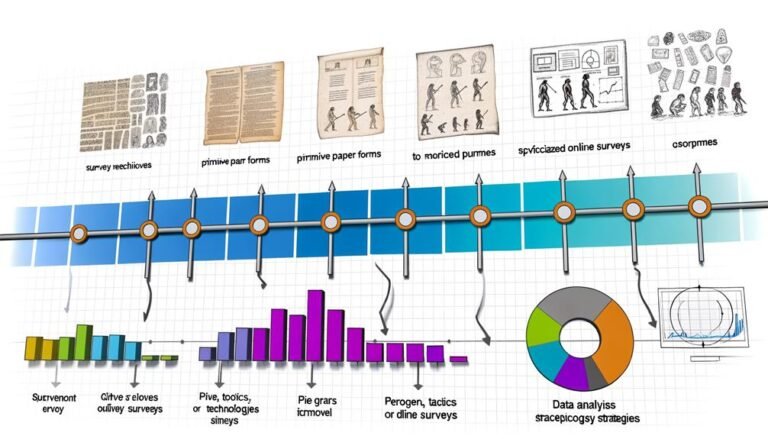Importance Of Intercultural Communication Training To The Global Workforce
The significance of intercultural communication training in the global workforce cannot be overstated. In today's interconnected world, understanding and navigating cultural differences is paramount for effective collaboration and business success.
From enhancing cross-cultural competencies to fostering stronger team dynamics, the benefits of such training are multifaceted.
However, the question remains: how can organizations ensure that their intercultural communication initiatives truly make an impact and drive meaningful change in a diverse global landscape?
Key Takeaways
- Enhances global workforce cross-cultural competencies.
- Strengthens team dynamics and collaboration.
- Develops cultural awareness and respect.
- Equips individuals with essential global competence skills.
Advantages of Intercultural Communication Training
Intercultural communication training offers a myriad of benefits to individuals and organizations navigating the complexities of today's globalized workforce. By developing cultural awareness, individuals can gain a deeper understanding of different cultural norms, values, and communication styles. This heightened sensitivity allows for more effective interactions and fosters respect and inclusivity within diverse teams. Moreover, such training equips individuals with global competence, enabling them to adapt their communication strategies to varying cultural contexts seamlessly.
Cultural awareness cultivated through intercultural communication training is instrumental in breaking down barriers that hinder effective collaboration. It fosters mutual understanding and appreciation, paving the way for smoother interactions and enhanced teamwork. Additionally, global competence empowers individuals to navigate cross-cultural challenges with confidence and agility, ultimately leading to improved productivity and innovation within organizations.
Impact on Global Business Relationships
Understanding the cultural nuances in negotiations and the art of building trust cross-culturally are critical aspects that can significantly impact global business relationships.
Recognizing these nuances and fostering trust can lead to successful collaborations, smoother transactions, and stronger partnerships in the global marketplace.
Intercultural communication training plays a key role in equipping individuals with the skills needed to navigate these complexities and forge meaningful connections across borders.
Cultural Nuances in Negotiations
Navigating cultural nuances in negotiations is a critical aspect that significantly impacts the success of global business relationships. When engaging in cross-cultural negotiations, understanding and adapting to different negotiation tactics and levels of cultural sensitivity are essential. Here is a table highlighting key considerations in cultural nuances during negotiations:
| Negotiation Tactics | Cultural Sensitivity | Effective Communication |
|---|---|---|
| Building rapport | Respect for hierarchy | Active listening |
| Bargaining | Non-verbal cues | Clarity in speech |
| Compromise | Time orientation | Patience and empathy |
| Decision-making | Direct vs. indirect communication | Clear understanding of roles |
| Relationship-building | Conflict resolution | Open-mindedness and flexibility |
Building Trust Cross-Culturally
Developing trust across cultural boundaries is a fundamental cornerstone in fostering enduring and mutually beneficial global business relationships. To build trust cross-culturally, consider implementing the following techniques:
- Active Listening: Demonstrate genuine interest and understanding by actively listening to your international counterparts.
- Open Communication: Encourage open and transparent communication to bridge cultural gaps and foster trust.
- Cultural Sensitivity Training: Provide employees with cultural empathy techniques to enhance their understanding of diverse perspectives and behaviors.
Building Cultural Competence in Teams
Developing cultural competence within teams is essential for fostering understanding and synergy among diverse team members. By embracing team diversity benefits and implementing effective cross-cultural collaboration strategies, organizations can harness the full potential of their global workforce.
Building cultural competence in teams not only promotes inclusivity but also enhances creativity and innovation within the workplace.
Team Diversity Benefits
Embracing team diversity in the workplace fosters a rich tapestry of perspectives and experiences that enhance cultural competence within teams. This diversity brings a range of benefits to the team dynamics, including:
- Enhanced Creativity: Different backgrounds and perspectives lead to innovative thinking and creative problem-solving.
- Improved Decision-Making: Diversity dynamics challenge assumptions and encourage thorough analysis before making decisions.
- Increased Team Cohesion: Embracing diversity fosters a sense of inclusivity and belonging, leading to stronger bonds among team members.
Cross-Cultural Collaboration Strategies
Recognizing the value of diverse perspectives and experiences within teams, implementing effective cross-cultural collaboration strategies is essential for building cultural competence and maximizing team productivity in today's global workforce.
Cultural sensitivity plays a pivotal role in fostering understanding and respect among team members from different backgrounds. Encouraging open communication, active listening, and empathy can help bridge cultural gaps and promote a harmonious work environment.
Embracing global teamwork requires a willingness to learn from one another, adapt to various working styles, and leverage the strengths that each team member brings to the table. By cultivating a culture of inclusivity and appreciation for diversity, teams can enhance creativity, innovation, and overall performance on a global scale.
Addressing Communication Challenges
Navigating communication challenges in a global workforce requires a nuanced understanding of cultural differences and effective strategies for fostering mutual understanding. Communication barriers and cultural misunderstandings can significantly hinder productivity and collaboration. Here are three key approaches to address these challenges:
- Promote Active Listening: Encouraging active listening can help team members comprehend messages accurately and show respect for diverse perspectives. This practice involves fully concentrating on what is being said rather than formulating a response preemptively.
- Provide Cross-Cultural Training: Offering comprehensive training programs on different cultural norms, communication styles, and business practices can enhance awareness and sensitivity among employees. This education can help preempt misunderstandings and promote a more inclusive work environment.
- Establish Clear Communication Channels: Implementing clear communication channels, such as regular check-ins, virtual collaboration tools, and cross-cultural communication guidelines, can streamline information sharing and reduce the likelihood of misinterpretations. By fostering transparent and open dialogues, teams can navigate communication challenges more effectively.
Enhancing Cross-Cultural Collaboration
To foster a more harmonious and productive global workforce, it is imperative to cultivate a culture of cross-cultural collaboration that values diversity and leverages it as a strategic asset. Cultural sensitivity plays a crucial role in this process, as it helps team members understand and respect differences in norms, values, and communication styles. By promoting cultural sensitivity, organizations can create an inclusive environment where every individual feels valued and respected, leading to increased engagement and motivation.
Global teamwork is another essential aspect of enhancing cross-cultural collaboration. Encouraging team members to work together across geographical boundaries fosters creativity, innovation, and a broader perspective. It enables organizations to leverage the unique strengths and insights of individuals from diverse cultural backgrounds, ultimately leading to more effective problem-solving and decision-making.
| Benefits of Cross-Cultural Collaboration |
|---|
| Enhanced creativity and innovation |
| Improved decision-making |
| Increased employee engagement |
Strategies for Effective Intercultural Communication
Cultivating a deep understanding of diverse cultural perspectives is essential for fostering effective intercultural communication within a global workforce. To navigate the complexities of intercultural interactions, consider the following strategies:
- Addressing Language Barriers: Language differences can impede clear communication. Encourage language training programs or provide translation resources to bridge this gap and ensure that all team members can effectively express their thoughts and ideas.
- Enhancing Cultural Awareness: Promote cultural sensitivity training to increase awareness of different customs, beliefs, and values. This knowledge can help individuals navigate cultural nuances and avoid misunderstandings that may arise in global collaborations.
- Understanding Nonverbal Cues in Global Teams: Nonverbal communication varies across cultures and can greatly impact interactions. Educate team members on how gestures, body language, and facial expressions may be interpreted differently to foster better understanding and communication in virtual or face-to-face meetings.
Measuring the Success of Training Programs
Measuring the success of intercultural communication training programs is essential for assessing their impact on enhancing global workforce collaboration and effectiveness. Training evaluation is a crucial aspect of determining the effectiveness of these programs. By utilizing performance metrics, organizations can gauge the impact of the training on employees' intercultural communication skills and overall job performance.
One way to measure the success of training programs is through pre- and post-training assessments to evaluate the knowledge and skills gained by employees. Additionally, feedback mechanisms such as surveys and focus groups can provide valuable insights into the perceived effectiveness of the training and areas for improvement.
Analyzing key performance indicators related to intercultural communication, such as increased collaboration among diverse teams or improved customer satisfaction in global markets, can also help organizations measure the tangible impact of the training. Ultimately, measuring the success of intercultural communication training programs allows organizations to make data-driven decisions to enhance training effectiveness and ensure the development of a more culturally competent global workforce.
Future Trends in Intercultural Training
As organizations continue to adapt to an increasingly interconnected global landscape, staying abreast of emerging trends in intercultural training is paramount for fostering a culturally agile and inclusive workforce. Looking ahead, the future of intercultural training is poised to be shaped by innovative approaches that harness technology and interactive methodologies to enhance learning outcomes.
Three key trends that are likely to define the future of intercultural training include:
- Virtual Reality: Leveraging virtual reality technology can provide immersive cross-cultural experiences for employees, allowing them to navigate real-world scenarios in a safe and controlled environment, thereby enhancing their cultural competence and empathy.
- Gamification: Incorporating gamification elements into training programs can make learning more engaging and interactive, motivating employees to actively participate in cross-cultural activities and challenges.
- Cultural Simulations: By using cultural simulations, organizations can create realistic scenarios that mimic cross-cultural interactions, enabling employees to practice effective communication strategies and problem-solving skills in a culturally diverse setting.
Conclusion
In conclusion, the importance of intercultural communication training cannot be overstated in today's global workforce. By building cultural competence, addressing communication challenges, and enhancing collaboration across cultures, organizations can significantly improve their business relationships and overall success.
As we look towards the future, the trend of intercultural training is likely to continue growing as companies realize the significant impact it can have on their operations and bottom line.







